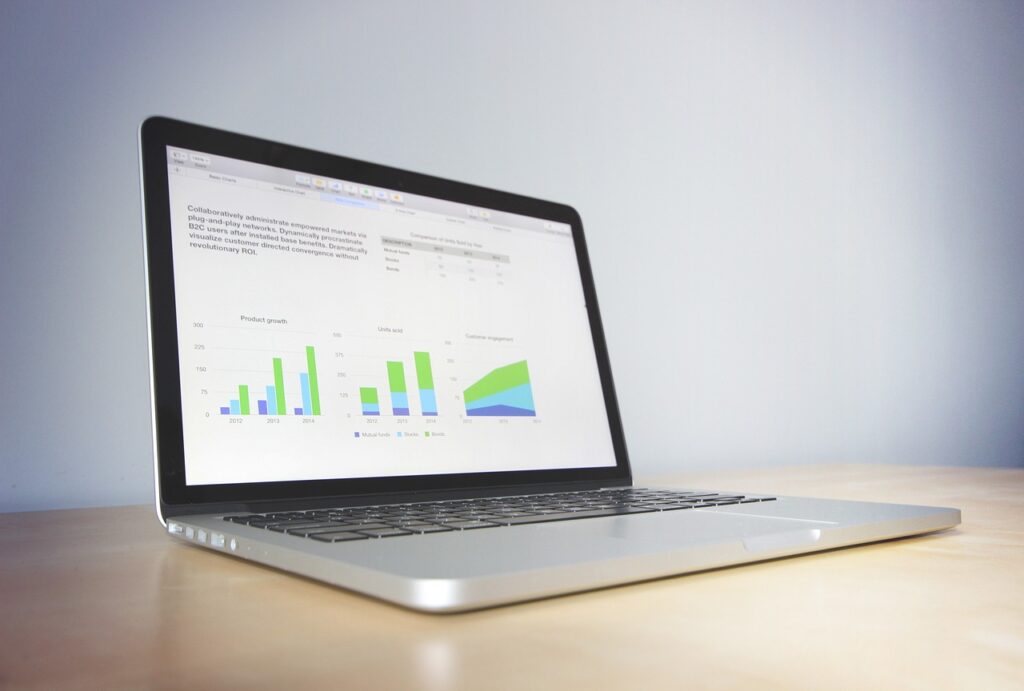Do you find yourself filling up page after page with notes on how to fine-tune your business strategy, only to end up scratching your head trying to understand how all of this is going to fit together with your business model? Well, you need the Business Model Canvas Template to put it all in one place!
The Business Model Canvas Template is designed to help sort out the most important parts of your business in one neat and organized flowchart.
What is a Business Model Canvas Template?
A business model canvas template is a pre-formatted document that provides a framework for jotting down all the various elements in your business plan, business model and revenue model in one convenient location.
It typically includes a series of boxes or cells, each representing one of the nine key elements of a business model. The boxes are arranged in a specific order, with some elements being grouped together. The template provides a starting point for creating a business model canvas, making it easier for users to organize their ideas and thoughts.
Why Use Business Model Canvas Templates?
Business Model Canvas templates provide a visual framework for organizing and analyzing information about a business. This can be useful for entrepreneurs and startups, as it provides a structured way to plan and organize their business model. The template can help businesses identify potential problems or areas for improvement, and develop strategies to overcome them.
There are several reasons why businesses might use Business Model Canvas templates:
To develop a new business model:
The template provides a starting point for defining a business’s value proposition, target market, and revenue streams.
To refine an existing business model:
The template can help businesses identify areas where their existing business model could be improved or optimized.
To communicate a business model to others:
The visual nature of the template makes it easy to share and discuss a business model with team members, investors, or other stakeholders.
To identify potential challenges or risks:
The template provides a comprehensive view of a business’s business model, which can help businesses identify potential challenges or risks that they may face.
Understanding the Building Blocks of the Business Model Canvas
There are 9 essential building blocks of a Business Model Canvas:
1. Customer segments:
This element identifies the different groups of customers that a business serves. It’s important to understand the needs, preferences, and behaviors of these customer segments in order to develop effective marketing and sales strategies.
To understand more about your customers, you need to conduct thorough market research analysis. You could use our suggested software for making the process, a lot easier and effective.
2. Value proposition:
This element describes the unique value that a business offers to its customers. This value proposition should be clear, compelling, and unique in order to differentiate the business from its competitors. You also need to test out your value propositions. Use a proof of concept and build an MVP to test out whether your ideal audience actually like your product or not.
3. Channels:
This element describes the different channels that a business uses to reach and engage with its customers. This could include things like online channels, retail stores, or sales representatives. If you try to sell your product or service digitally, you may need to focus on digital marketing for your business. You could do it in-house or you could hire a digital marketing agency or SEO agency to help you out.
4. Customer relationships:
This element describes the different types of relationships that a business has with its customers. This could include things like personal interactions, automated interactions, or self-service interactions. Keep the marketing 7Ps and the 3P rules of marketing in mind, while strategizing in this step.
5. Revenue streams:
This element describes the different ways that a business generates revenue. This could include things like selling products or services, subscriptions, or advertising.
6. Key resources:
This element identifies the key resources that a business needs in order to operate. This could include things like physical assets, intellectual property, or human resources. This element also helps you plan out how you are going to get and manage key resources.
For example, if you are a manufacturing startup, large machines may cost a fortune! This step helps you analyze whether you are going to use finance lease to get the equipment you need or whether you are going to outsource your manufacturing to a third party via a manufacturing contract.
7. Key activities:
This element identifies the key activities that a business needs to perform in order to deliver its value proposition to customers. This could include things like product development, marketing, or customer service.
8. Key partners:
This element identifies the key partners that a business works with in order to deliver its value proposition. This could include suppliers, distributors, or strategic alliances.
9. Cost structure:
This element identifies the key costs that a business incurs in order to deliver its value proposition to customers. This could include things like raw materials, labor, or marketing expenses. Taking careful note of this is important as it helps you keep a track over your working capital as well as helps you manage and improve your startup finances.
Using the Business Model Canvas in your Startup
To use the Business Model Canvas template in your startup, follow these steps:
- Start by downloading our Business Model Canvas template. You can find other templates online, or use a tool like Canva to create your own.
- Once you have your template, fill in the nine boxes with information about your startup’s business model. These boxes represent the nine key components of the Business Model Canvas.
- Once you have filled in the boxes with information about your startup’s business model, take some time to review and analyze your Business Model Canvas. Look for areas where you can improve or optimize your business model, and consider any potential challenges or risks that you may face.
- Use your Business Model Canvas as a living document. As your startup grows and evolves, revisit your Business Model Canvas regularly and update it with new information and insights. This will help you stay on track and ensure that your business model remains relevant and effective.
Benefits of Using a Business Model Canvas Template
A business model canvas creates some clear benefits for any and all startups at the get-go:
1. It helps you think through every aspect of your business model:
You can use it as a tool for refining and communicating your own thinking about how your company works — whether you’re an entrepreneur starting out on his or her first venture or an executive who needs to explain her firm’s strategy to colleagues on her team.
2. It helps you identify gaps in the way you’re currently operating:
If there are any gaps between what you’d like to achieve and what you’re currently doing, this exercise will help identify them so that you can make adjustments accordingly.
3. It helps you determine where opportunities lie:
Once all of your stakeholders are on board with the way you’re operating, this exercise helps you identify where there may be opportunities to improve. It also helps prevent you from falling into marketing myopia.
4. It provides an opportunity for all of your stakeholders to share their opinions:
Having everyone in the room at once allows them to collaborate and share ideas about how best to move forward.
5. It helps you identify areas that need improvement:
By having everyone in the room at once, this exercise allows you to identify where there may be opportunities to improve.
Issues with Business Model Canvas Template
While Business Model Canvas can be a useful tool for organizing and analyzing a business model, there are a few potential issues that businesses should be aware of:
1. The template is not a one-size-fits-all solution:
Every business is different, and what works for one business may not work for another. The template provides a starting point for developing a business model, but businesses will need to tailor it to their specific needs and circumstances.
2. It does not provide all the answers:
The template provides a framework for organizing and analyzing a business model, but it does not provide all the answers. Businesses will need to do their own research and analysis to determine the best course of action for their business.
3. The Canvas does not guarantee success:
No tool or framework can guarantee success for a business. The Business Model Canvas is a tool to help businesses plan and organize their business model, but it is ultimately up to the business to execute on that plan and make it a success.
4. The template is not the only tool you need:
The Business Model Canvas template is one of many tools that businesses can use to analyze their business models and make changes that will improve their performance.
5. The template is not a replacement for creativity:
The Business Model Canvas is just that — a canvas. It’s an empty space where you can draw the different elements of your business model, such as customers, resources and revenue streams. There is no right answer or right way to fill in the blanks; it’s all up to you. Feel free to tap into design thinking for getting the best out of the process.
Wrapping It Up!
The business model canvas template is a great tool to refine your product or service for your customers and ensure that you are providing something that is valuable. Both new and veteran entrepreneurs can utilize to brainstorm business ideas using it.
Hopefully, this article helps you in understanding the helpful tool.
Need help with your business growth? Send us an email at adhip[at]winsavvy.com or book a meeting for free here!
Author Bio: Isha Mudgal is part of WinSavvy’s editorial team. She hails from a tech background and writes predominantly on marketing and tech. Follow her on LinkedIn [Isha Mudgal].





















